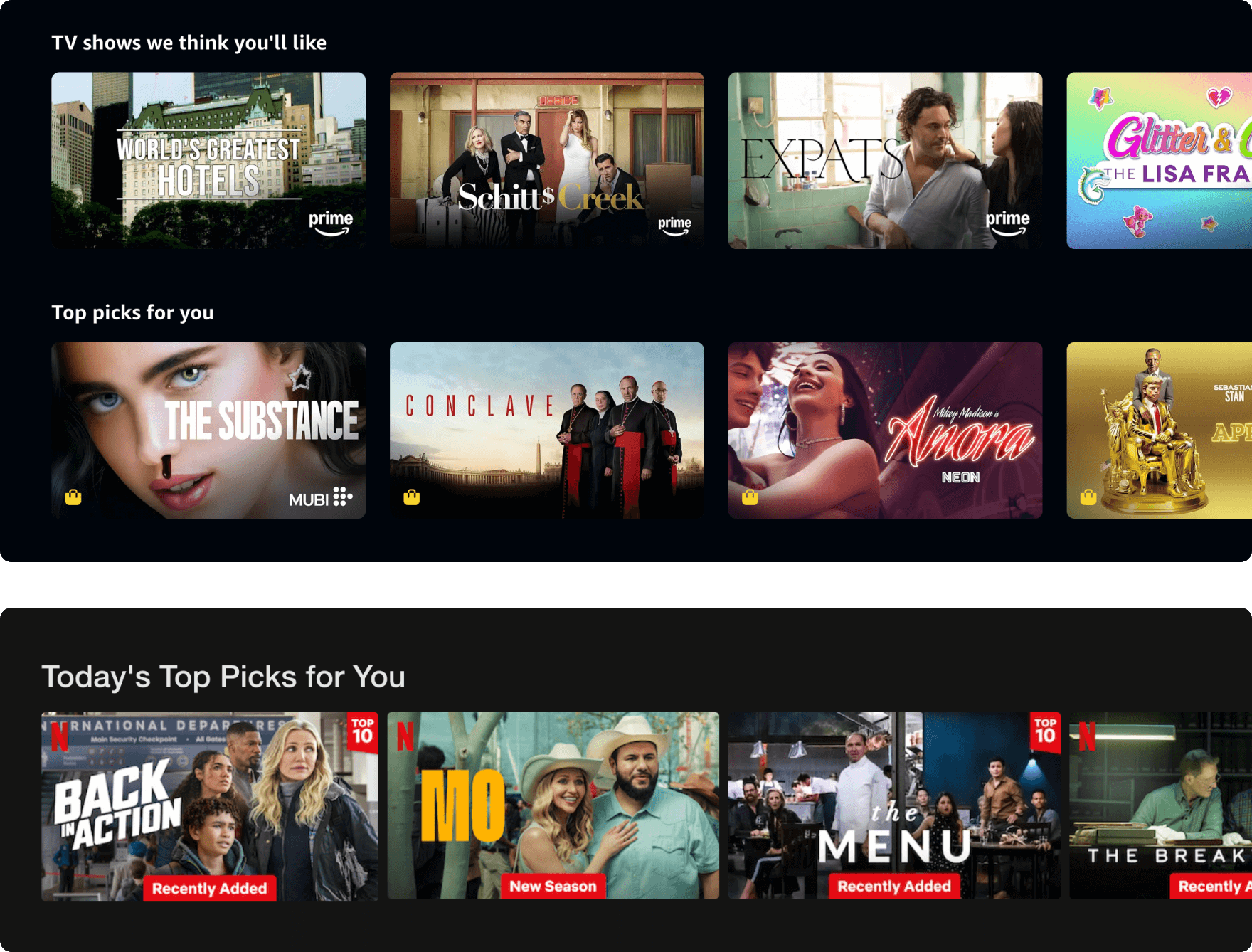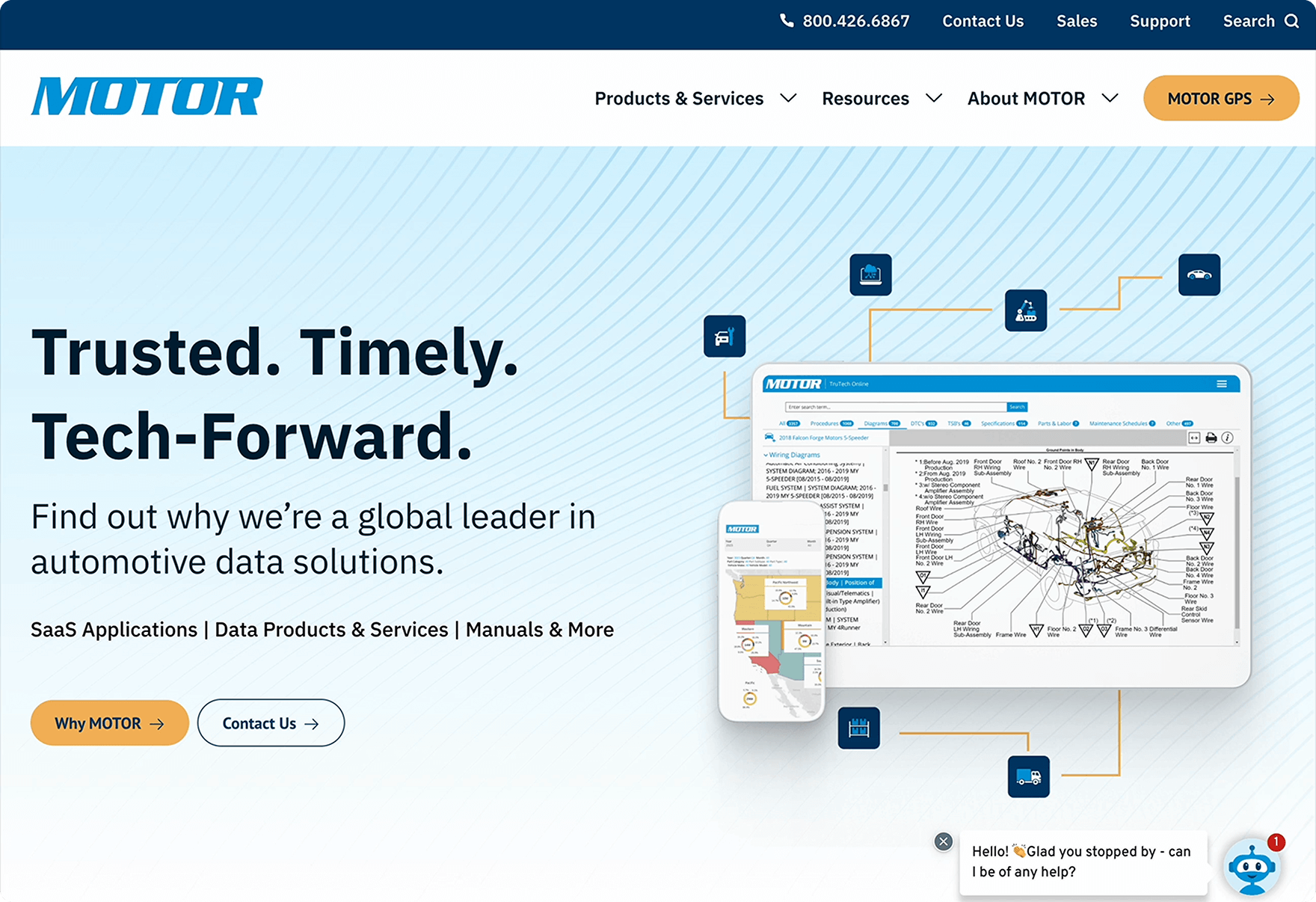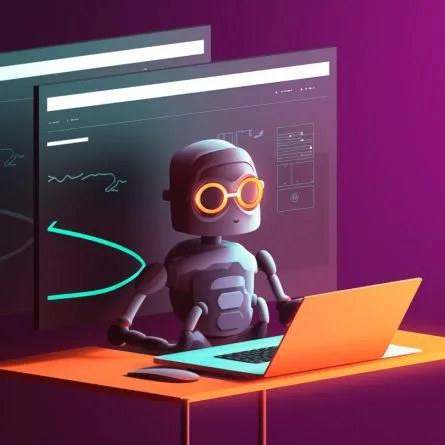The AI Revolution Is in Full Swing: Have You Adjusted Your Web Content Strategy Yet?
Artificial intelligence (AI) is changing everything we all thought we knew about the Web — profoundly impacting everything from how we use on-site and traditional search to how we service customers, create images, generate copy, analyze data, and so much more.
The launch of ChatGPT in late 2022 was the iPhone moment for generative artificial intelligence: a technology started to move into the hands of everyone, not just experts. It will change everything everywhere all at once.
—Stephanie Pistel, NEXT Conference, a global digital business think tank
Whether you’re a website manager, digital marketer, or content creator, you have undoubtedly felt the impact of these changes firsthand. And you’ve probably wondered what you should be doing to keep up. If you’ve taken a wait-and-see approach, the time has come — you need to help your digital presence adapt to AI-driven changes in user expectations and search engine requirements.
How AI Is Affecting User Experience
The evolution and proliferation of generative AI tools like ChatGPT, GitHub Copilot, and Jasper have altered the model for how people interact with the web on almost every level. Here are a few of the most important changes.
Content Creation
AI tools are getting better every day at writing website articles, blog posts, and news summaries (as well as revising existing pieces in a different style and tone), generating images and videos (even hyper-realistic likenesses of people who don’t actually exist), composing music, and more. A word of caution: As evolved as these tools already are, we highly recommend using them to supplement — and not replace — your own team’s human touch, unique voice, and one-of-a-kind perspective.
Engagement
Your website and related digital properties are no longer one-way information streams for visitors. In addition to assisting users with conducting on-site searches, navigating pages, and engaging with content, AI tools and virtual assistants make meaningful interactions and conversations possible in any digital experience.
Hyperpersonalization
Sites like Netflix and Amazon use AI to track customer data — including profile details, geographic location, browsing history, and past purchases — to adapt in real time to provide customized content, product, and service recommendations.

Accessibility
The new generation of AI-powered screen readers and transcription tools — including Microsoft Seeing AI, Equalweb, and AccessiBe — can instantly convert web copy to speech, translate information into other languages, auto-caption multimedia content, and adjust site visuals to meet the needs of users with disabilities (e.g., apply high-contrast modes or larger text sizes).
Security Risk & Fraud Detection
AI tools including Darktrace, Cylance (now owned by Blackberry), and Bolster watch for suspicious user behavior that may be a red flag for fraud, providing real-time alerts and security enhancements that protect website admins and other users.
How AI Is Affecting Search
From Google to Bing to DuckDuckGo, every major search engine is adapting its algorithms and user interface to adapt to AI-generated content and serve up AI results and summaries. And even OpenAI’s own engine, Chat GPT Search, is steadily gaining ground in the search game.
The result? AI is helping engines better understand user intent and elevate search from what was once a tool for simply finding information into one that delivers more complex insights and solutions. For users, this translates into better and faster access to relevant data. For businesses, this means learning the new rules of engagement for AI-oriented SEO best practices — and adapting their content accordingly to stay visible and relevant.
How to Craft Website Content That Is AI-Ready
So how do you ensure that the content on your website is optimized and organized for AI to be able to read, understand, and prioritize for search? Let’s look at what goes into creating a dynamic and effective web content strategy that keeps up with the times.
High-Quality Content Matters — Actively monitor content across all pages of your site to ensure that you have a robust library of well-written, meaningful, and relevant resources available for your users.
Out With the Old and in With the New — You’ll want to ensure that your site content contains no obvious conflicts or outdated information. Old news posts or archived content may feed inaccurate information to the web scraping and text summarization tools AI systems use and provide confusing results to end users.
Stay Organized — Ensure that your website code (HTML) is well structured so the AI parser understands which content is related, which is separate, and what hierarchy exists within the information. You’ll also want to introduce very clear, specific text paragraphs and bullet points in your articles and posts, rather than relying on AI to interpret the visual structure of your pages.
Learn some other important AI-driven content lessons in this post: 5 Takeaways From Letting ChatGPT Read Our Website — and How It Should Influence Your SEO Strategy.
How Can You Leverage AI to Drive More Engagement on Your Site?
- Implement “virtual assistants” like custom chatbots and intake helpers — software programs that are trained to use your specific content to interact with users via natural language processing (a fancy term for casual conversation). Not only do these tools improve customer service experiences by allowing users to engage with you instantly 24/7 for a variety of interactions that still feel somewhat personal, but they can also reduce staffing costs and streamline operations by reducing the need for 1:1 human interactions with your team.

- Leverage auto-completing queries and conversational search tools that allow users to ask common questions and get accurate answers quickly.
You’ve likely seen these types of tools on a wide variety of websites at this point, but if you have limited experience engaging with them, try out the interface we created for our own site below. You might ask, for example, “Do you create Drupal websites?” or “Tell me about your web design services,” and you’ll receive results based on our website content.
What can we help you with?
Experience our conversational search tool. Ask your question below.
_
How We Can Help
When you’re ready to adapt your web content strategy to get the most mileage out of evolving AI technologies, reach out to schedule a free consultation. We’ll be happy to discuss these topics and more:
- Your website’s readiness for AI search engines
- Technical SEO issues, search position & search engine trends
- Opportunities for better analytics & data tracking



